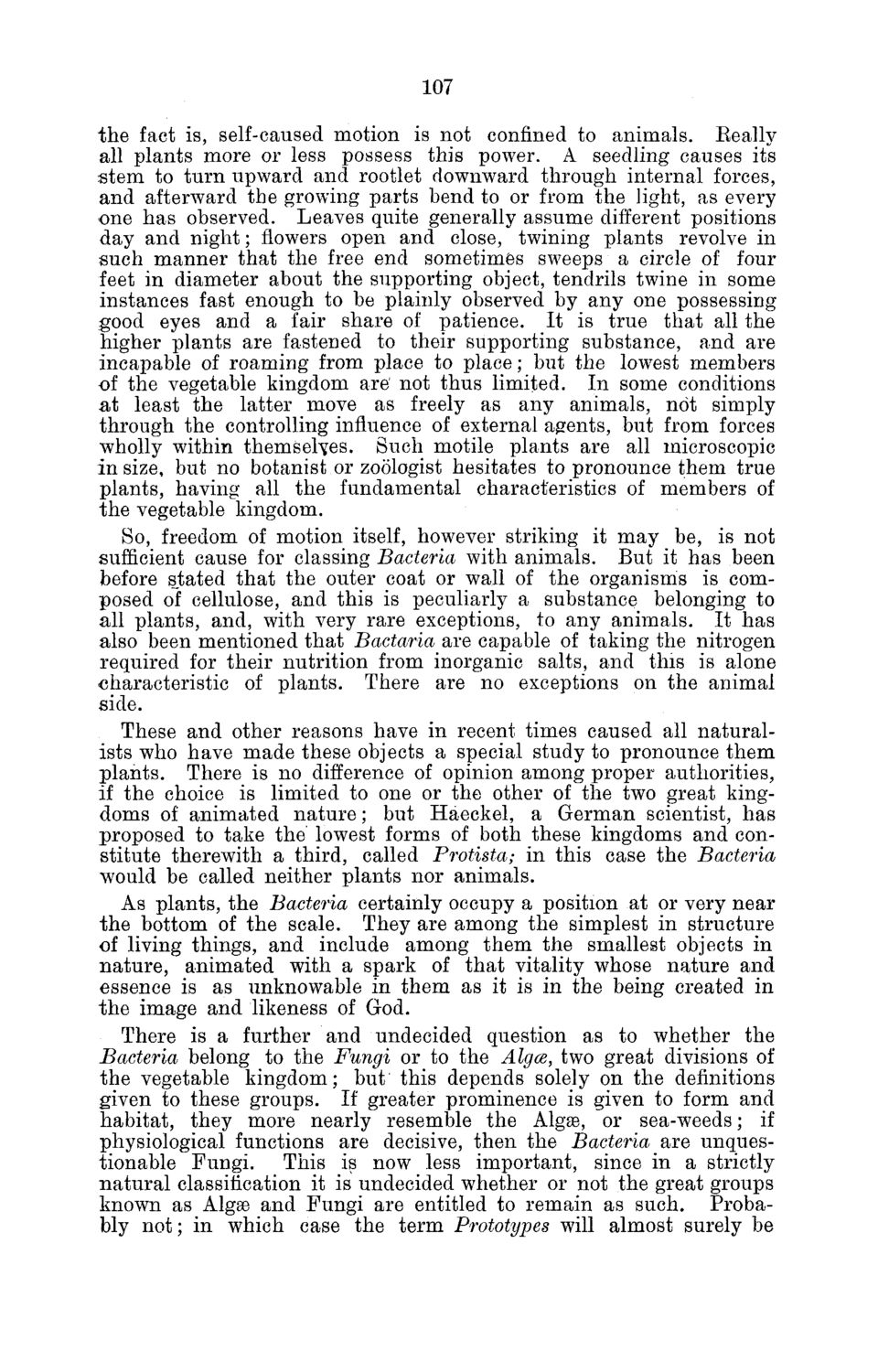| |
| |
Caption: Board of Trustees Minutes - 1882
This is a reduced-resolution page image for fast online browsing.

EXTRACTED TEXT FROM PAGE:
107 the fact is, self-caused motion is not confined to animals. Keally all plants more or less possess this power. A seedling causes its stem to turn upward and rootlet downward through internal forces, and afterward the growing parts bend to or from the light, as every one has observed. Leaves quite generally assume different positions day and night; flowers open and close, twining plants revolve in such manner that the free end sometimes sweeps a circle of four feet in diameter about the supporting object, tendrils twine in some instances fast enough to be plainly observed by any one possessing good eyes and a fair share of patience. It is true that all the higher plants are fastened to their supporting substance, and are incapable of roaming from place to place; but the lowTest members of the vegetable kingdom are not thus limited. In some conditions at least the latter move as freely as any animals, not simply through the controlling influence of external agents, but from forces wholly within themselves. Such motile plants are all microscopic in size, but no botanist or zoologist hesitates to pronounce them true plants, having all the fundamental characteristics of members of the vegetable kingdom. So, freedom of motion itself, however striking it may be, is not sufficient cause for classing Bacteria with animals. But it has been before stated that the outer coat or wall of the organisms is composed of cellulose, and this is peculiarly a substance belonging to all plants, and, with very rare exceptions, to any animals. It has also been mentioned that Bactaria are capable of taking the nitrogen required for their nutrition from inorganic salts, and this is alone characteristic of plants. There are no exceptions on the animal side. These and other reasons have in recent times caused all naturalists who have made these objects a special study to pronounce them plants. There is no difference of opinion among proper authorities, if the choice is limited to one or the other of the two great kingdoms of animated nature; but Haeckel, a German scientist, has proposed to take the lowest forms of both these kingdoms and constitute therewith a third, called Protista; in this case the Bacteria would be called neither plants nor animals. As plants, the Bacteria certainly occupy a position at or very near the bottom of the scale. They are among the simplest in structure of living things, and include among them the smallest objects in nature, animated with a spark of that vitality whose nature and essence is as unknowable in them as it is in the being created in the image and likeness of God. There is a further and undecided question as to whether the Bacteria belong to the Fungi or to the Algce, two great divisions of the vegetable kingdom; but this depends solely on the definitions given to these groups. If greater prominence is given to form and habitat, they more nearly resemble the Algae, or sea-weeds; if physiological functions are decisive, then the Bacteria are unquestionable Fungi. This is now less important, since in a strictly natural classification it is undecided whether or not the great groups known as Algae and Fungi are entitled to remain as such. Probably not; in which case the term Prototypes will almost surely be
| |